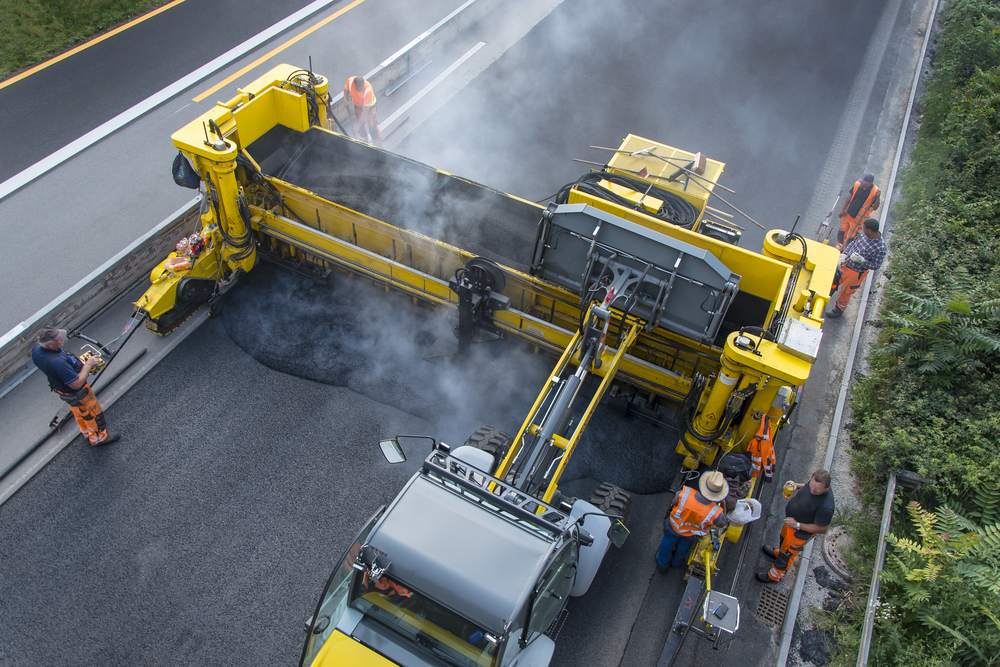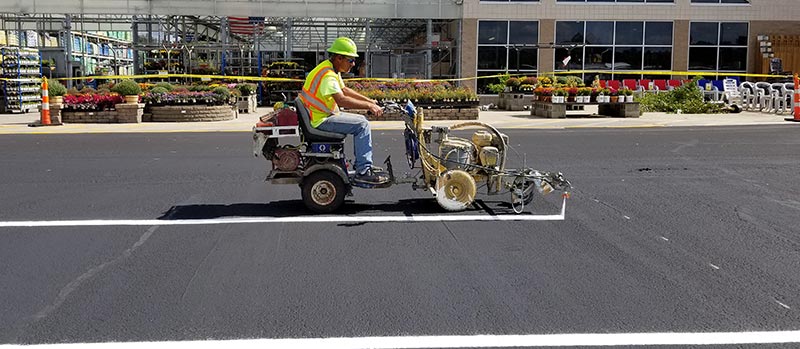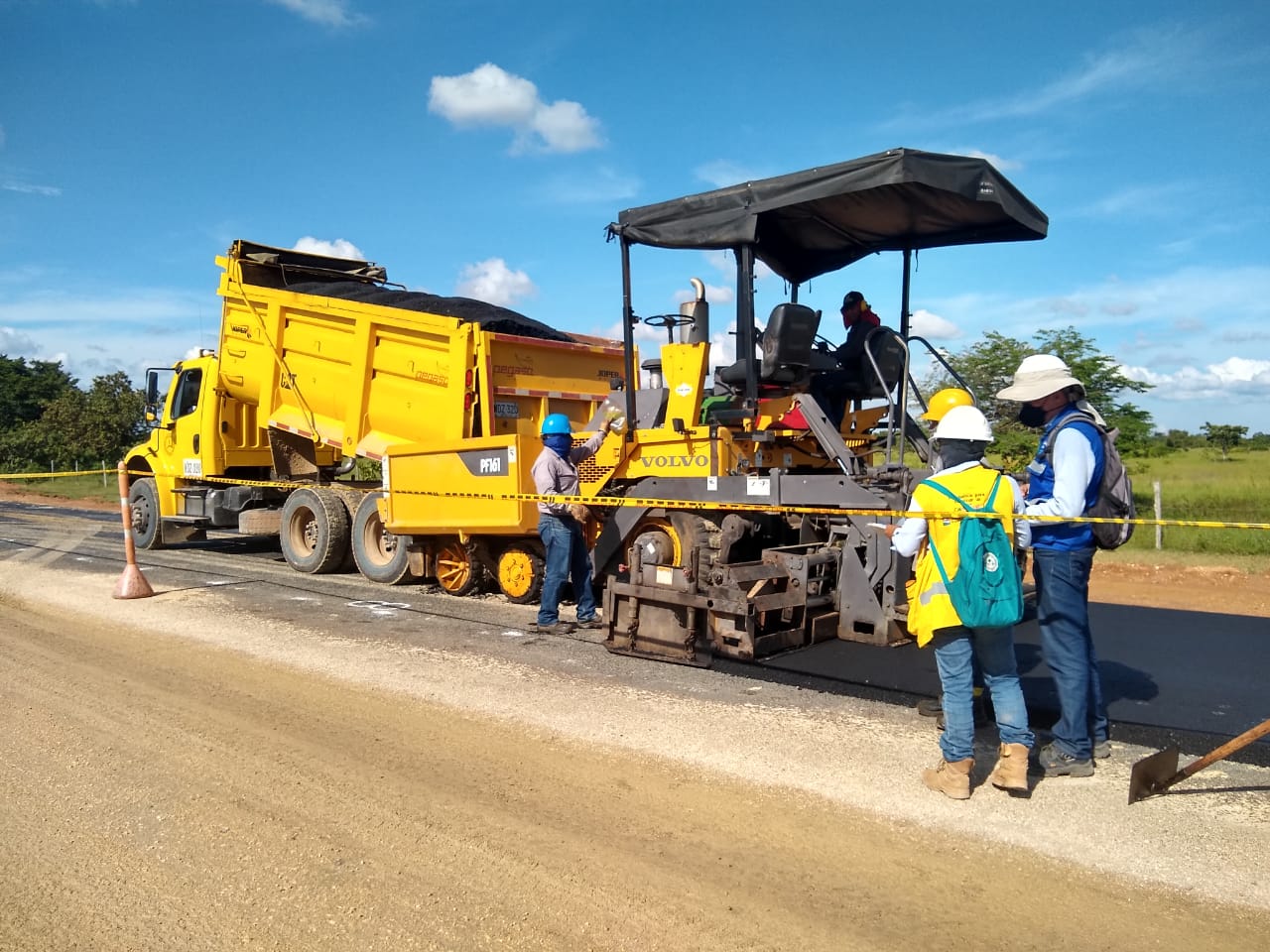A1 Professional Asphalt & Sealing Llc - Truths
A1 Professional Asphalt & Sealing Llc - Truths
Blog Article
Some Known Incorrect Statements About A1 Professional Asphalt & Sealing Llc
Table of ContentsThe 5-Minute Rule for A1 Professional Asphalt & Sealing LlcIndicators on A1 Professional Asphalt & Sealing Llc You Should KnowA1 Professional Asphalt & Sealing Llc Things To Know Before You Get ThisThe Main Principles Of A1 Professional Asphalt & Sealing Llc The smart Trick of A1 Professional Asphalt & Sealing Llc That Nobody is Discussing

The oil in a vehicle engine is not simply oil. It has a range of ingredients to improve the automobile's performance. These consist of polymers, viscosity modifiers, heat stabilizers, extra lubricants, and wear ingredients. The REOB includes all the additives that remained in the waste oil in addition to the wear metals from the engine (mostly iron and copper).
By making many blends utilizing different REOB samples and different asphalt binders, the variations mainly can be balanced out. Several States offered samples of recognized REOB make-up to TFHRC researchers, who examined the examples to contrast the percent of added (known) REOB to the found (checked) amount. The analyses revealed an equivalent percentage of added and found REOB.
How A1 Professional Asphalt & Sealing Llc can Save You Time, Stress, and Money.
They received an overwhelming feedback. The TFHRC scientists assessed 1,532 examples from 40 States, one Canadian province, and two Government Lands Highway divisions. They analyzed each example twiceamounting to more than 3,000 analyses. None of those States understood that the asphalt they were getting consisted of REOB. One State insisted its examples had no REOB.
Of the 1,532 samples checked, 12 percent included REOB, and some contained substantially high degrees of it at 1020 percent. The highest degree was 34 percent in a sample from Texas, which TxDOT had actually made use of in a patching substance. This testing additionally exposed the existence of phosphoric acid in 11 percent of the examples, and 2 percent included ground tire rubber.
Two years earlier at TRB's yearly conference, the Federal researchers held an REOB workshop and offered the searchings for of their lab assessments to a standing room-only group. Some agencies do not especially ban REOB, they do enforce physical tests that avert its useeffectively a restriction. Others do not prohibit it by specification, however have agreements with asphalt suppliers to prevent using REOB
The A1 Professional Asphalt & Sealing Llc PDFs
A handful do permit REOB, some within certain limitations. For instance, Ohio and Texas restriction levels to less than 5 percent of the asphalt. To create a trustworthy examination method that all States can utilize, the TFHRC researchers established a round-robin examination strategy. The individuals are 11 State highway agencies (Illinois, Massachusetts, Minnesota, Mississippi, Montana, North Carolina, Oklahoma, South Carolina, Texas, Vermont, and Wyoming), 2 independent testing laboratories, the Ministry of Transport in Ontario, Queen's University in Ontario, and an Ontario paving specialist.
The individuals are examining the samples independently using the standards given by the TFHRC researchers. The outcome will be a recommended AASHTO examination technique that any State can embrace and utilize.
The pavement with REOB, which lies 0.6 mile (1 kilometer) from the pavement without REOB, has similar subgrade, website traffic thickness, and environment. The sector of Highway655 with 5 to 10 percent REOB showed substantial splitting. In this example, the visibility of REOB was the recognized root cause of cracking at a reduced temperature levels.
"In our experience in copyright, also small amounts of 23 percent can be a trouble." In a similar way, a section of test sidewalk in Minnesota (MN1-4) found to consist of REOB additionally broke too soon. The sidewalk performed well for the very first 3 to 4 years, yet after that started to split. This sidewalk is additionally subject to low temperatures.
Top Guidelines Of A1 Professional Asphalt & Sealing Llc
The examinations were not considerable, yet they revealed that at degrees of 6 percent or more, the tensile stamina of the asphalt went down dramatically. At a degree of 3.5 percent REOB, the variant in the physical examination techniques was higher than the effect of REOB. As a matter of fact, it was difficult for scientists to analyze whether REOB existed.

One binder parameter thought about is the difference in between the low temperature vital specification temperature for stiffness (S) in the flexing beam of light rheometer and the bending beam rheometer creep incline (m-value) noted as Tcritical. TC = TC (S) TC (m-value). Assessment of this parameter is still recurring. Two independent study groups, one from AASHTO and the various other from the Asphalt Institute, concluded that even more research study is needed on the use of REOB in asphalt.
Previously, all asphalt screening measured design buildings such as tightness. These tests do disappoint what materials had actually been included in the asphalt. One example received throughout the TFHRC study had an extremely weird evaluation. The example had the complying with test results: Superpave PG 64-28 with a heat quality of 67.3 Tcritical on the bending beam of light rheometer was 6.7 levels Celsius.

Top Guidelines Of A1 Professional Asphalt & Sealing Llc
These results demonstrate there are weaknesses in the standardized engineering testing protocols that may be exploited. The manufacturer might have a check out here financial benefit and the product passes all the standardized examinations, yet the product may not be helpful to making sure long-lasting performance. To resolve this problem and the growth of new asphalt additives and extenders, TFHRC is beginning a research study program to use handheld spectroscopic tools, x-ray fluorescence spectroscopy, and Fourier transform infrared spectroscopy to make it possible for evaluations to be performed in the area instead of needing to take samples back to the laboratory.
Report this page